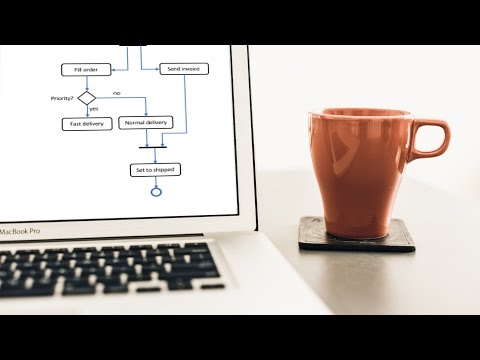
This means that the exit price will usually be close to your set limit, but is still susceptible to slippage during high-volatility market conditions. While there aren’t any rigid rules when it comes to placing stop orders, there are some generally accepted guidelines. For example, forex day traders might set up stops just outside the daily price range of the currency pairs traded. This way, https://topforexnews.org/investing/how-to-start-a-cryptocurrency-business/ if the market direction that initially prompted the trade suddenly reverses, the stop loss protects the position. In another example, those who favor a swing trading style might set stop losses further into loss territory—perhaps two to three times greater than the average daily trading range. While traders should have plans to limit losses, it is equally essential to protect profits.
USD/TRY Forecast: Strong Bullish Trend – DailyForex.com
USD/TRY Forecast: Strong Bullish Trend.
Posted: Thu, 13 Jul 2023 13:48:31 GMT [source]
Place a stop-sell order a few pips below the support level so that when the price reaches your specified price or goes below it, your short position will be opened. Although where an investor puts stop and limit orders is not regulated, investors should ensure that they are not too strict with their price limitations. If the price of the orders is too tight, they will be constantly filled due to market volatility. Stop orders should be placed at levels that allow for the price to rebound in a profitable direction while still providing protection from excessive loss. Conversely, limit or take-profit orders should not be placed so far from the current trading price that it represents an unrealistic move in the price of the currency pair. For example, if you set it too far, you will inevitably suffer from huge losses.
What is a guaranteed stop?
My mission is to help my readers navigate their trading journeys with confidence and skill, encouraging them to strive for success in the dynamic and challenging world of forex trading. Due to the volatile nature of the forex market, you can use a volatility stop to protect against price action fluctuations. A volatility stop is applied based on market volatility, rather than market value.
- My mission is to help my readers navigate their trading journeys with confidence and skill, encouraging them to strive for success in the dynamic and challenging world of forex trading.
- Once a
stop loss is set, traders can trust that their risk is managed, allowing them
to stick to their predetermined strategy without succumbing to emotional
impulses. - As you can see, traders were successfully winning more than half the time in most of the common pairings, but because their money management was often bad they were still losing money on balance.
- Conversely, limit or take-profit orders should not be placed so far from the current trading price that it represents an unrealistic move in the price of the currency pair.
- An investor with a short position will set a limit price below the current price as the initial target and also use a stop order above the current price to manage risk.
A stop loss order is a risk management tool used by traders to limit potential losses on a trade. It is an order placed with a broker to automatically close a position when the market reaches a predetermined price level. By setting a stop loss order, traders can protect themselves from excessive losses if the market moves against their position. In the fast-paced and volatile world of Forex trading, a
stop loss order is an indispensable risk management tool.
Limit Order
During high-volatility market conditions, setting a wider limit allows you to take advantage of market swings. During low- volatility market conditions, the limits would be set narrower to the entry https://day-trading.info/berndale-capital-review-2017/ price in order to stay close to the target price level. With a stop loss market order, your broker will automatically close the position when the current market price nears your set limit.
Every day is a new challenge, and almost anything from geopolitics, surprise economic data releases, to central bank policy rumors can turn currency prices one way or another faster than you can snap your fingers.
Stop Loss Order Types
If the trader wanted to set a one-to-two risk-to-reward ratio on every entry, they can simply set a static stop at 50 pips, and a static limit at 100 pips for every trade that they initiate. One of the trickiest concepts in forex trading is the management of stop-loss orders, which effectively close out your trading positions when losses hit predetermined levels. Stop losses are most effective at protecting capital from being lost through indecision. The proper use of stop losses can increase the degree of control an individual has in managing risk.
- C) You can close out your postion using stop orders in parts using an average method stop loss- meaning some of your postion could remain open to take advantage in case the trend quickly changes.
- This way, if the market direction that initially prompted the trade suddenly reverses, the stop loss protects the position.
- For example, a trader may buy a stock and place a stop-loss order with a stop 10% below the stock’s purchase price.
- Those ways mainly refer to methods with percentages we have discussed a bit earlier.
- In other words, you expect that the currency price will bounce off the resistance to go lower or bounce off the support to go higher.
Those ways mainly refer to methods with percentages we have discussed a bit earlier. However, there are some more complicated methods that may include hard stops as well as specific actions on the market either you buy or sell assets. Let’s have a closer look at techniques you may apply depending on your trading style. As an efficient and effective way to manage open trading positions, traders tend to use take profit and stop-loss in conjunction.
A Comprehensive Guide to Leverage Calculation for Professional Forex Traders
It is not uncommon, for example, for a new trader to accidentally add to a losing position instead of closing the trade. Aside from the devastating financial implications, making trading mistakes is incredibly stressful. A Market Order is executed as an instant buy or sell order at the best available price https://currency-trading.org/cryptocurrencies/10-best-cryptocurrency-apps-in-2021/ in the market. For market orders, your broker will provide you with the best price they can offer on your trade against the market. Rather than fulfilling the order at the next available price, a stop loss limit order will instruct your broker to automatically exit the trade at a specified limit.

This function is implemented by setting a stop loss level, a specified amount of pips away from the entry price. A stop loss can be attached to long or short trades making it a useful tool for any forex trading strategy. A stop-loss order is a type of advance order that allows you to automatically exit a position in order to limit losses and reduce risk exposure when price movements are more adverse than you are willing to accept. Sometimes called a stop loss, stop order or stop market order, this tool is an automatic instruction to sell an open position when the price drops to a pre-set losing limit, ensuring your losses do not grow too big.
Therefore, it is crucial to combine stop loss orders with proper risk management strategies, thorough market analysis, and a disciplined trading plan. With a solid understanding of stop loss orders and their application, beginner traders can enhance their chances of success in the Forex market. A forex stop loss is a function offered by brokers to limit losses in volatile markets moving in a contrary direction to the initial trade.
Stop loss is a crucial tool for any forex trader, allowing us to trade confidently and minimize risk. Before placing your trade, you should already have an idea of where you want to take profits should the trade go your way. A limit order allows you to exit the market at your pre-set profit objective. They are different from stop-limit orders, which are orders to buy or sell at a specific price once the security’s price reaches a certain stop price.
